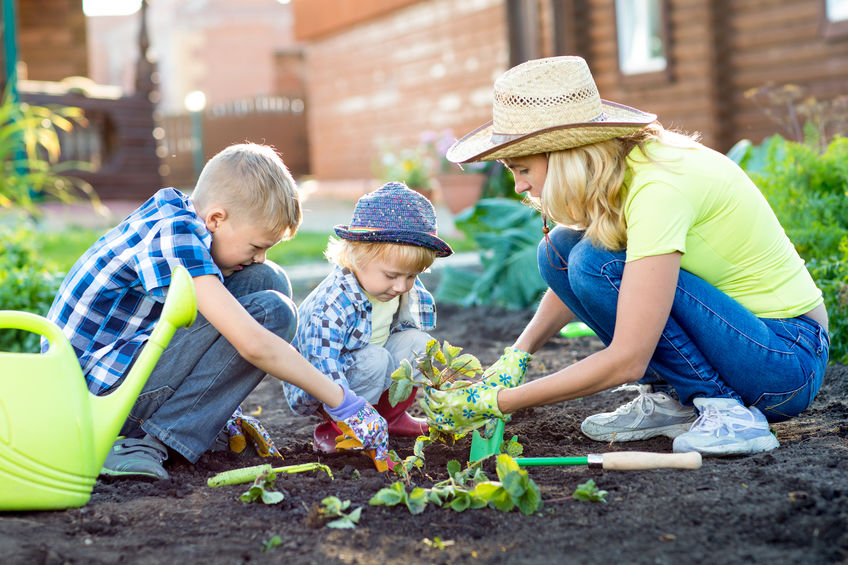How Do You Teach Gardening To Children? – Tips For Parents
For many parents and their children, gardening is either a fun little hobby that they take up for a while at home or something that the kids will tackle in school for a little while. However, did you know that gardening has so many benefits for your kids?
Gardening teaches children so many great skills and values. It can teach them how to be appreciative of nature and environmental conversation. It also teaches them patience, perseverance, and the value of hard work. What’s more, gardening helps nurture the innate curiosity that children have, whether it’s how plants grow, why earthworms are so important, or the whole “circle of life.”
So, how do you teach gardening to children? Well, that’s the best part! It doesn’t have to be expensive, complicated, or time-consuming. Your children might benefit more from a simple approach to gardening. Here are some tips that you can use to introduce your children to the wonderful world of gardening.
Baby Steps
Even if you don’t have a large garden at home, you can still teach your child the basics of gardening. Starting a smaller project might be better because children have short attention spans. A small gardening project not only blooms faster, but it also helps teach your kids in a way that’s easy for them to grasp.
Mungbeans are a great starter plant because they require little space and care, and they sprout quickly! Place a handful of mungbeans in a plastic cup on top of damp tissue paper and leave it on a sunny windowsill. In a few days, you and your child will already see them sprouting.
As your child gains more interest in gardening, you can move on to bigger projects such as growing tomatoes or peppers in a pot.
Choose Relevant Plants
One of the most important things you can do is ask your child what kind of plants they like and find which plants are easy to grow based on their interests. If your child loves flowers, consider growing quick-blooming plants such as marigolds or snapdragons. Many vegetables are great for budding gardeners because they are easy to grow and fruit quickly, such as cherry tomatoes and bell peppers.
It is important to get feedback from your child because it nurtures their interest in gardening in an already present way. Since the interest is already there, it is easier for you to expand on it so that it becomes a regular part of your child’s daily activities.
Get the Right Tools for the Job
Getting the right gardening tools not only makes the job easier, but it also gives your project the best chance of succeeding! If you want your child to become interested in gardening, you need to give them the right tools from the beginning.
Look for best gardening tools that are specifically created for your child. There are child-sized versions of gardening tools that are better suited for your child’s hand size and grip strength. You also need to supply a durable pair of gardening gloves to help protect your child’s hands.
Repeat Good Habits
With gardening, the key to success is consistent with good habits. The good habits that your child needs to grow a successful garden are also good habits that will help them become successful in life, such as organization, responsibility, and valuing hard work.
Some of the best gardening habits to teach your child are:
- Proper cleaning, maintenance, and storage of gardening tools
- Setting a schedule for tending and maintaining their garden (watering, removing weeds, etc.)
- Learning how to take care of different plants properly
- Understanding basic scientific concepts such as photosynthesis, water cycle, etc.
Establish a Connection with Your Food
The best way to keep a child interested and invested in your garden is by eating the fruits of your labor! When the plants in your child’s garden have matured, harvest them, and cook a meal together. Whether you’re using tomatoes in a sandwich or using herbs to garnish a meal, using vegetables, herbs, and even fruits that are grown out of your child’s garden will help them cultivate a lasting interest in gardening.
You can also try visiting a farmer’s market with your child so that they can develop a deeper understanding of where their food comes from. What’s more, they will also develop an appreciation for the farmers who grow food.
Conclusion
So, how do you teach gardening to children? You do it in a way that’s easy for them to understand, simple to implement, and has lasting effects. Even a small windowsill garden can be a great teaching tool because you don’t need to invest a lot of time and effort to start seeing the payoff. Just be ready for a ton of questions about how plants work, so maybe it’s time to brush up on basic science principles like photosynthesis and how plants grow from seed!

